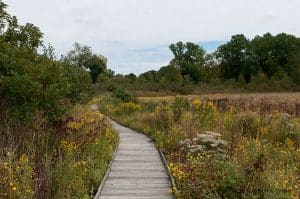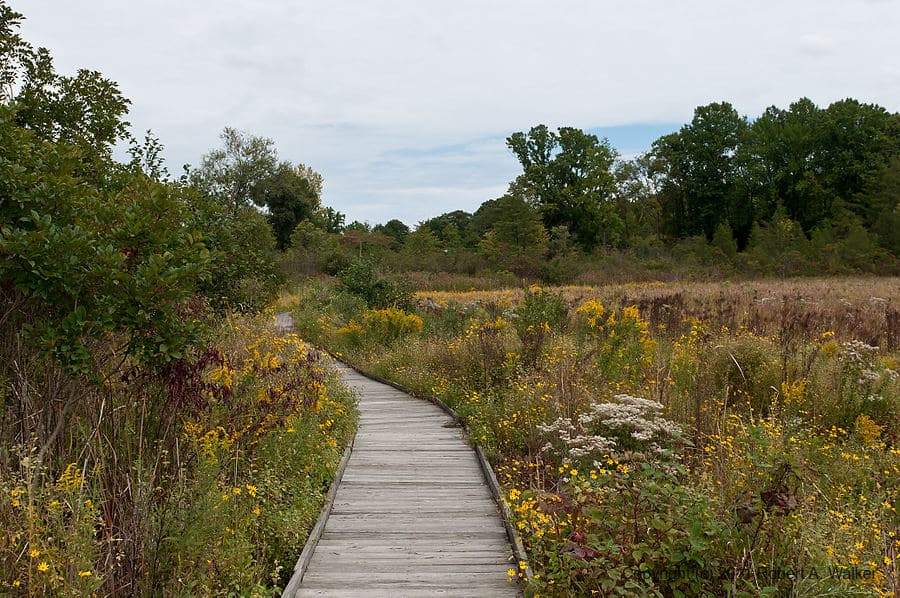Preserving natural ecosystems has many benefits. Healthy watersheds provide services like water filtration and storage, air filtration, carbon storage, nutrient cycling, soil formation, recreational value, food, and timber. Yet our society is becoming increasingly disconnected from nature. Every day, we lose 4,000 acres of green space to development, and this amount is only expected to triple by 2050. While 70% of mothers recall playing outside every day when they were younger, only 30% of their children do. Today, children spend roughly 90% of their time indoors. With so much emphasis on the latest technologies and rapid population growth, why should preserving green space be a priority?
Health Benefits: Spending time in nature has shown to reduce stress and relieve depression, anger, and anxiety. In fact, one study in Pennsylvania showed that hospital patients with a view of trees healed faster with fewer complaints than those patients with only a view of a brick wall. In addition, it has been linked to benefits relating to attention, memory, and creative thinking. People who spend more time outside in natural habitats are more likely to nurture close relationships, value community, and be generous with their money. Due to the recreational value, green spaces have a number of innate fitness benefits. People enjoy biking, hiking, walking, bird-watching, boating, and many other activities in natural green spaces.
Water Supply Benefits: Green spaces actually help to protect our drinking water supply. By preserving natural riparian habitats, we allow the creation and proliferation of buffer zones and water recharge areas along waterbodies. These types of habitats help to prevent flash floods and minimize pollutants entering our streams. Fewer pollutants entering our freshwater supplies mean less water treatment required and fewer emissions entering our atmosphere.
Habitat Benefits: When a natural ecosystem is deforested, culverted, or otherwise harmed, the plants and animals living there are forced to find alternative habitats or quickly adapt to the new habitat. In other habitats, however, these species will be forced to compete for their niches and resources that they already had established before the disturbance. Natural green spaces provide habitat for native plants and animals that are best suited to our local climate. In addition, these spaces serve as nesting and breeding places for many bird species, including migratory birds.
Economic Benefits: Freshwater in the United State is currently valued at $70 per acre-foot, and wetlands are valued at $500 per acre. The wetlands in Tinker’s Creek watershed have a total value of about $454,000. In addition, natural ecosystems filter and store water, reducing the amount of runoff leaving the area. Wetlands are estimated to provide $17,000 in wastewater treatment functions per acre. In Tinker’s Creek watershed, the wetlands retain an estimated 3,150 acre-feet of water. Retaining this amount through grey infrastructure would cost $94,300,000! Preserving natural ecosystems will also reduce costs associated with flooding. Currently, the damages from flooding are costing the United States $8.3 billion each year. Natural ecosystems also contribute $953 billion to the economy each year as result of outdoor recreational activities.

Property Value Benefits: The presence of nearby natural areas and wetlands increases the property values of adjacent homes by an estimated 5.33%. In fact, a 1 acre increase in wetland area is correlated with a $1,100 increase in adjacent property values. In addition, properties near natural areas have higher resident retention rates and higher premiums even in tight economies. Lots with trees or located near parks are estimated to be 20% easier to sell than normal lots. Home values are shown to decrease significantly, however, with decreasing water quality. Natural areas can have economic benefits for properties owners only if they are protected and maintained.
Development pressures are only expected to intensify in the coming years, and we need to act now to preserve our green spaces. Preservation of these areas can help design and control development to minimize its harmful effects to all of the aforementioned benefits.

